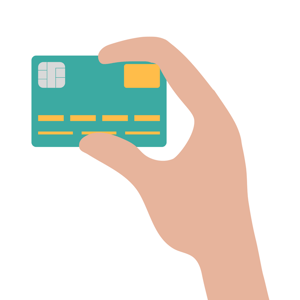Forget March Madness, it feels more like EMV Chip Madness! As a business owner it's important for you to understand how EMV chip technology is a slam dunk for your business security and we're here to help.
Magnetic-stripe credit cards have been around since the 1960s and use the same technology as cassette tapes. The United States is actually one of the last countries on the planet still using them, and it is one of the reasons why the US leads the world in credit card fraud.
[Why are EMV cards more secure than traditional cards? Check it out here.]
Many of you have either heard of or have been affected by the past point-of-sale data breaches that happened to large retailers such as Target or Home Depot. I still remember getting the notification letter from Target and shortly after a new debit card from my credit union.
In an effort to catch up with the rest of the world, two technologies are quickly becoming the standard in credit card processing: EMV and NFC. Both of these technologies are much more secure than the old magnetic stripe credit cards.
[EMV Technology is included in all Evosus Software purchases]
As a small business owner it’s important for you to understand what all of this means. That’s why I’m here. Let’s start off with the basics.
- Get familiar with the terminology.
What does EMV stand for? EMV stands for Europay, Mastercard, Visa. These three companies developed the standard for chip credit and debit card technology.
What is a Smart Card? You may hear the following terms that all reference the new EMV Chip Cards:
- Smart card
- Chip card
- Smart-chip card
- Chip-enabled smart card
- Chip-and-choice card
- EMV smart card
- EMV card
- EMV chip card
What is Dipping and Tapping? You may hear the terms dipping and tapping. These simply reference how the consumer is paying. Dipping (EMV Chip) implies they are inserting the chip portion of the card into your EMV-capable card terminal to process their payment. Tapping (NFC) implies the consumer is using an NFC (near field communication) credit card that is equipped with an RFID chip (radio frequency identification chip). When these types of cards are used the consumer simply holds the credit card near the card reader terminal (tapping), and the credit card communicates wirelessly with the card reader. NFC also includes mobile payments like Apple Pay™, Android Pay™, and Samsung Pay™. More and more people are paying for things using mobile payments.
- Understand what this means for your business.
With the new EMV chip technology comes a liability shift. But what does that mean? Simply put, the party that does not support EMV technology will be liable in a chargeback. If an EMV chip card was used in an EMV-capable terminal then the fraud liability remains with the issuer.
To protect your business you’ll need to order new EMV-capable card reader terminals that accept EMV (dip) and NFC (tap) credit cards. With new card reader terminals, you can accept more secure forms of payment. This protects both you and your customers.
As part of their EMV Migration process, Evosus Software clients,using Integrated card services, will purchase their card readers directly from our partner Open Edge. Devices must be purchased from Open Edge because specific encryption software must be installed on each card reader terminal.


